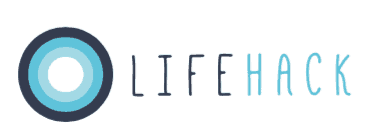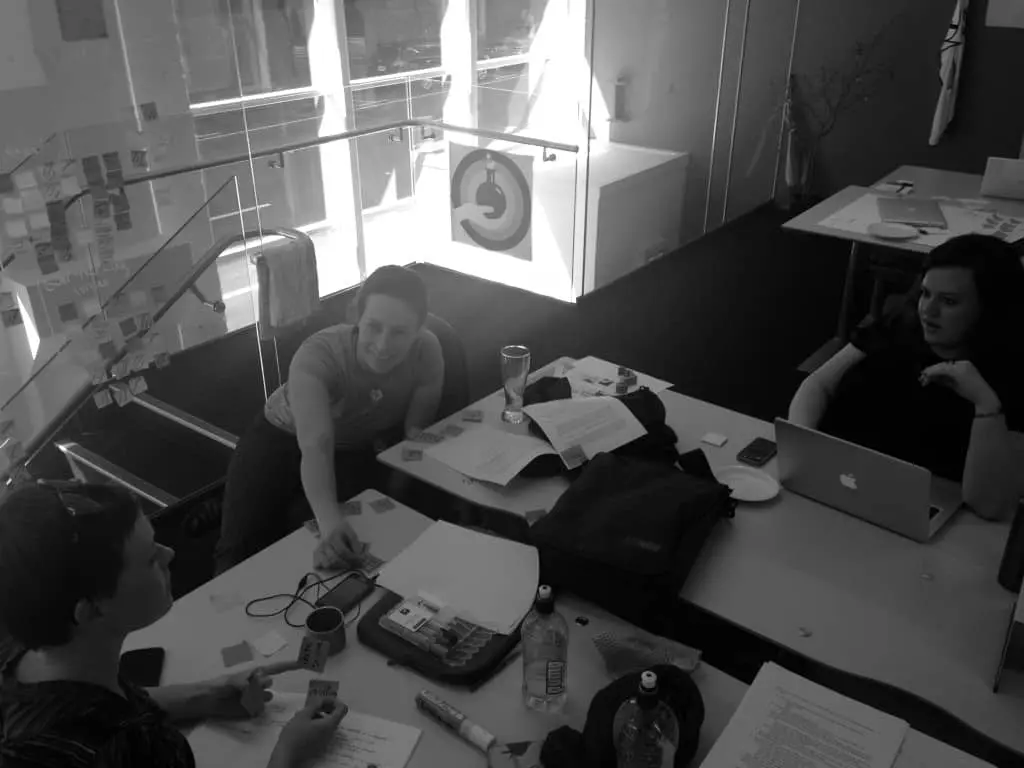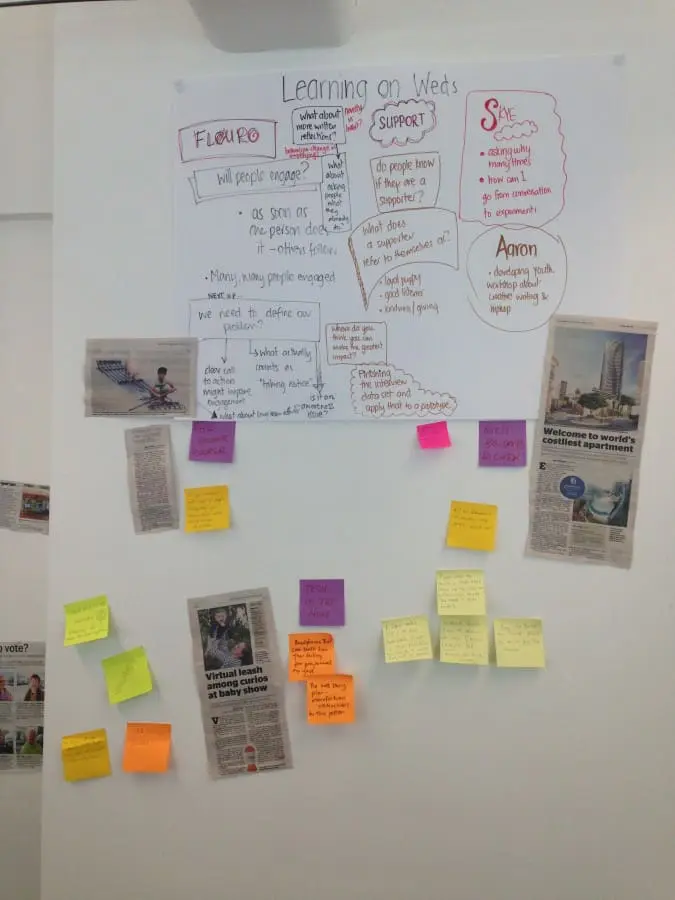#LifehackLabs – Week 3 – Building Ideas, Research and Prototypes
Penny Hagen assists organisations to apply participatory and design-led approaches to the development of policy, organisational process, strategy and services. Penny specialises in co-design and social change projects and provides training and mentoring to design teams and organisations wanting to achieve greater impact through the adoption of participatory and co-design approaches. Penny recently joined the Lifehack Governance team and is a mentor for the 5 week long #Lifehacklabs.
With Sam away visiting Young and Well this week, Penny stepped in to help, and we asked her to share her thoughts about week 3.
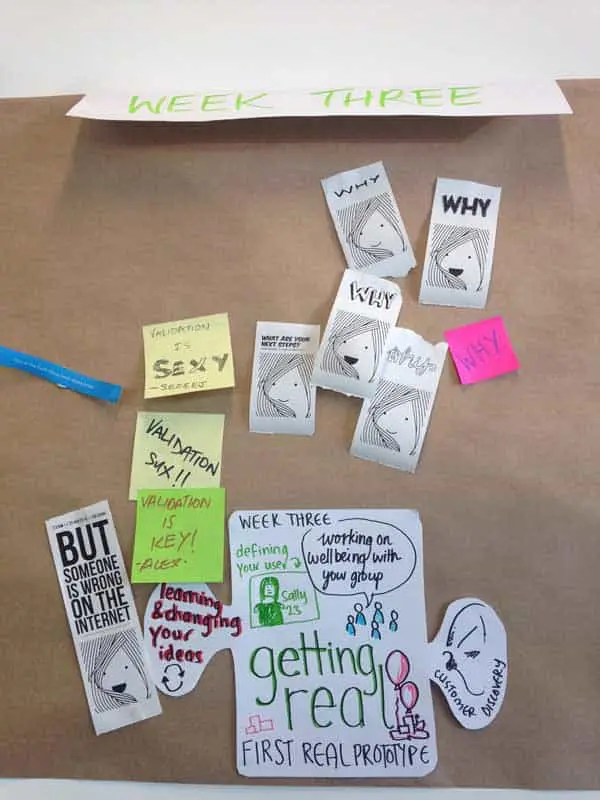
Coming into the middle week of the Lifehack Labs journey, it was amazing to see the thinking around youth wellbeing that was already present on the walls around the space.
The first two weeks had obviously already provided the opportunity for teams to delve deep into many different perspectives, experiences and potential areas where they might have a positive impact in the lives of young people. This was evidenced in the great range of thoughts and explorations relating to wellbeing hung up in the form of post it notes and mind maps around the room.
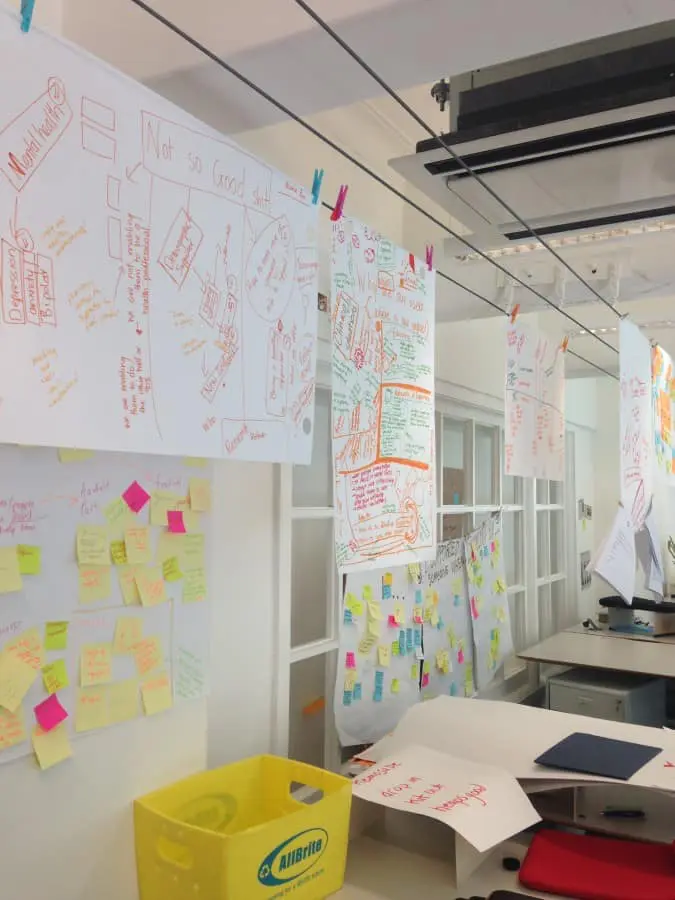
Week 3 was the week the participants began putting the prior weeks’ learnings into practice within the context of their own passions and interests. The group began forming into teams and started fleshing out concepts for new kinds of youth wellbeing tools and ventures – using different business, tech and design techniques.
I was struck by the teams’ ability to navigate the intersection of (at least) four different domains.
Lifehack Labs challenges participants to operate at the intersection of social innovation and enterprise, to bring together thinking, tools and evidence from youth wellbeing, technology, design thinking and lean start up. Throughout the lab so far, participants have been offered tools and perspectives from many sources, and this week each team or individual started to find their own ways of knitting these tools together.
Week three required a lot of translation work as people explored their learnings within the context of their own work and ideas. It was great to see people pulling forward the input and knowledge offered from previous weeks into their own work and starting to make meaning from it. This raised many great questions: What do all these different things mean to me? To us? To the things I already know about the world and about myself? What can I take on board, what feels right, what feels wrong and why?
A good example of this was understanding the Lean Validation board and typical lean validation techniques in the context of youth wellbeing. Generously shared by SODA inc, the board puts great emphasis on validating your market. It assumes that you can separate your market from your product, and although it does acknowledge these can be different, it doesn’t explicitly account for having a market that is separate from your “user”. This raised questions such as how much emphasis should we put on market validation compared to product validation within the lifehacklabs context? Both are important but at what point in the process and where do we start? Another important question raised by the lean start up tool set was: How do we account for risk and ethics when validating? Is it ethical to promote fake events or websites in a health and wellbeing context for example? Participants found that the “just do it” approach to validating and testing promoted by Lean methodology also needs to be balanced with an assessment of potential harm and risk when working in the context of mental health. Enabling positive behaviour change is often a more complex proposition than a financial transaction for a product and participants needed to draw on all their resources and personal knowledge and experience to build out their toolset and approaches.
It was awesome to see participants assess these conflicts and tensions, and find their own ways of working around and with them.
I was also struck by:
The simultaneous unity and diversity of participants.
#Lifehacklabs has been pretty unique in bringing together 20 inspirational people from all over Aotearoa New Zealand, each with different skills, experiences, perspectives and working styles. It is awesome to see people both building on and being able to apply and contribute their own unique perspectives, skills and approaches – working independently, differently and together, whilst also helping each other out on a personal level. This was evident particularly in how participants were taking turns to nudge each other forward. If someone was got a little overwhelmed (understandably!) or unsure of what to do next, others would help build a connection to the next point. I felt I had entered into a safe trusting space, with a huge culture of generosity and openness.
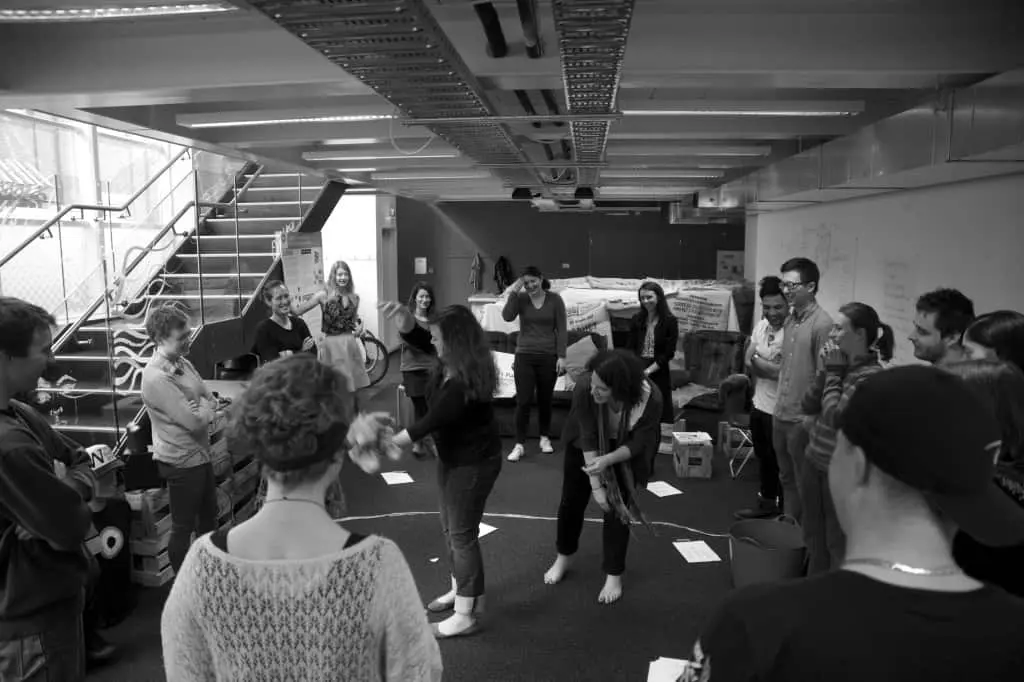
The limitations of our language and the huge potential to add value.
We spent a lot of time talking about identifying problems. But as one team in particular found, in this context much of the potential for innovation comes from thinking about things as opportunities.
It was important to think about how we, as designers of programs and services, can work with those who we seek to benefit in both the definition of the opportunity, as well as how it might be delivered. We can’t sit in a room and reason our way into something being effective. We need to work with those people to understand what will be effective for them. What will be of value, and how that valuable ‘thing’ needs to be framed, shaped and delivered in order to be useful for people and have the intended wellbeing outcomes. We need to use prototypes and tangible experiences to help people to express their feedback effectively and also to participate in the design process itself.
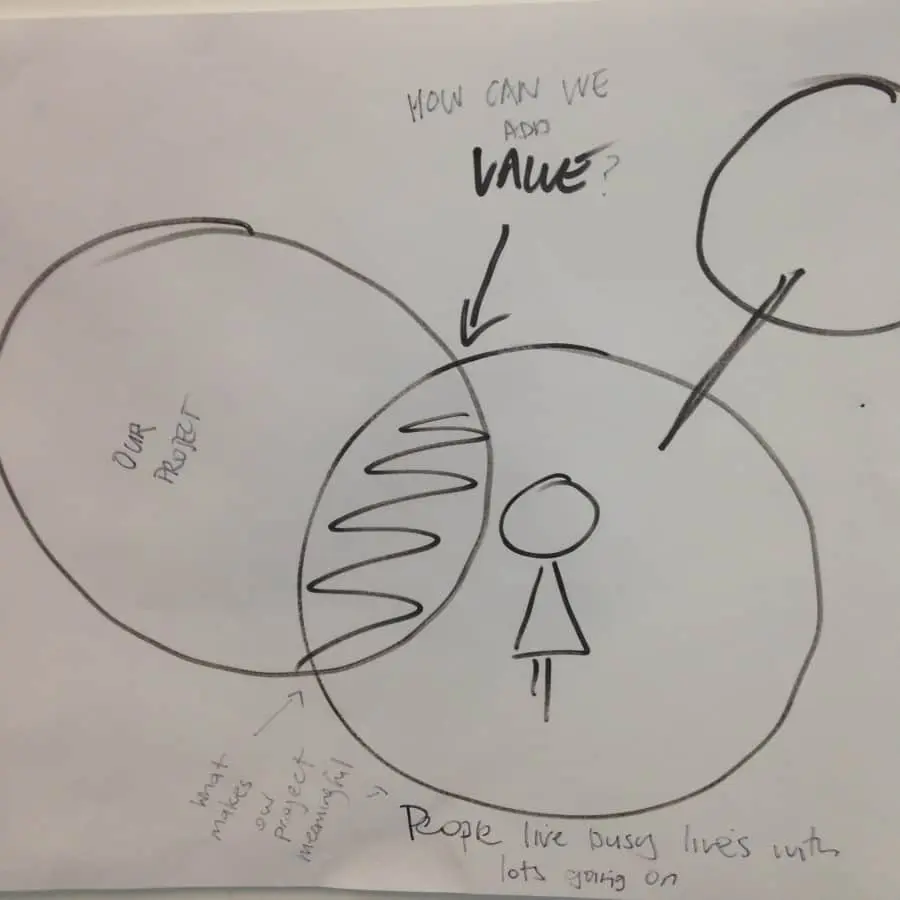
Week 4 will be (I imagine) a serious gear shift, as people move from processing, testing out and being challenged in all the many possible directions they could go, towards needing to time box their testing and curiosity. Decisions will need to be made in order to turn the endless potential of ‘what might be’ into a rapid process of targeted prototyping, learning and building, and ultimately, a valuable outcome to the youth wellbeing space.
